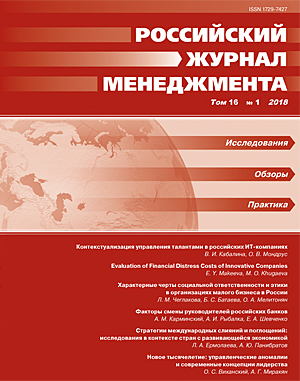CEO Turnover in Russian Banks
DOI:
https://doi.org/10.21638/11701/spbu18.2018.104Abstract
The successful activities of any commercial organization, in particular the bank, are based on a clear corporate financial architecture: an effective financial strategy and corporate governance system (relationship management, board of directors and shareholders). CEO is the main representative of the bank and a reflection of its success or failure in the market. In this regard there is a question: what influences CEO turnover? Is it related only to the bank’s financial performance or it includes the system of corporate governance developed in the credit institution? In few studies on this topic, one of the main instruments of corporate governance and its effectiveness is just the possibility of changing the CEO because of weak results of the organization. If an inefficient manager is removed from the management of the bank, then corporate governance may claim to be effective. In this paper, the study of these issues was carried out on the sample of 336 Russian banks in the period of active revocation of licenses (2014–2016) and cleaning the banking sector from unscrupulous participants. It was shown that the high operational efficiency of the bank and the high share of the CEO in the equity capital reduce the probability of CEO turnover.
Keywords:
corporate governance, Russian banks, CEO turnover
Downloads
References
Translation of references in Russian into English
Downloads
Published
How to Cite
Issue
Section
License
Articles of the Russian Management Journal are open access distributed under the terms of the License Agreement with Saint Petersburg State University, which permits to the authors unrestricted distribution and self-archiving free of charge.





